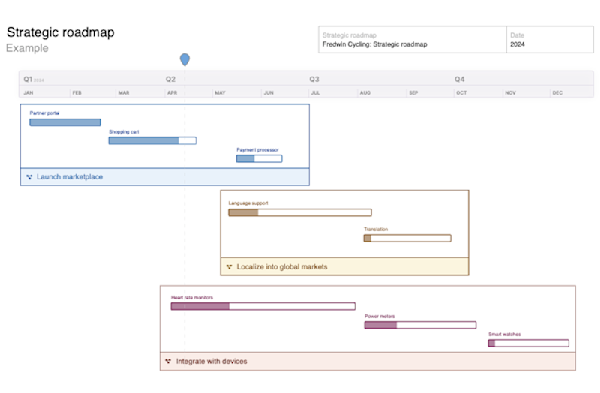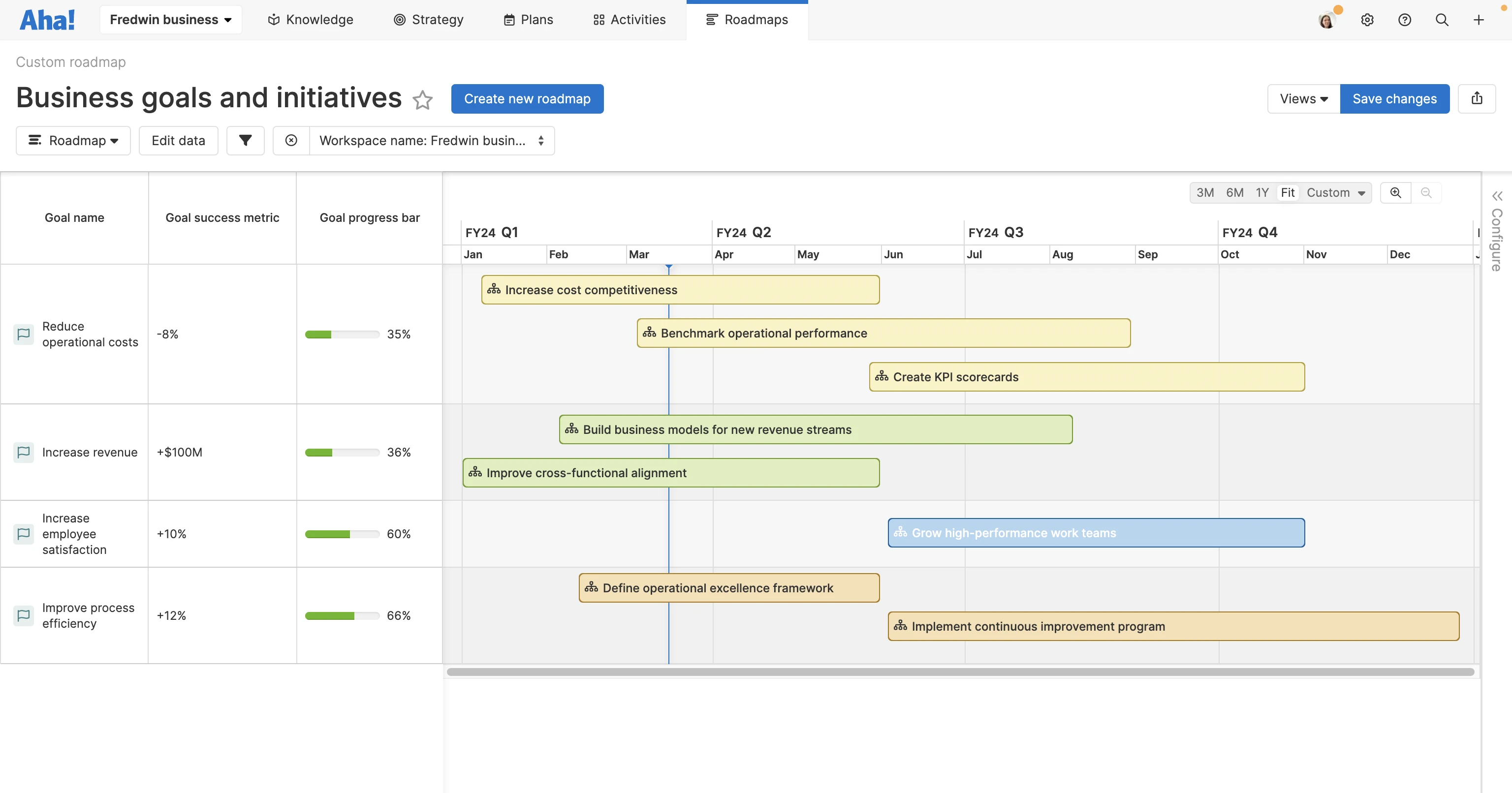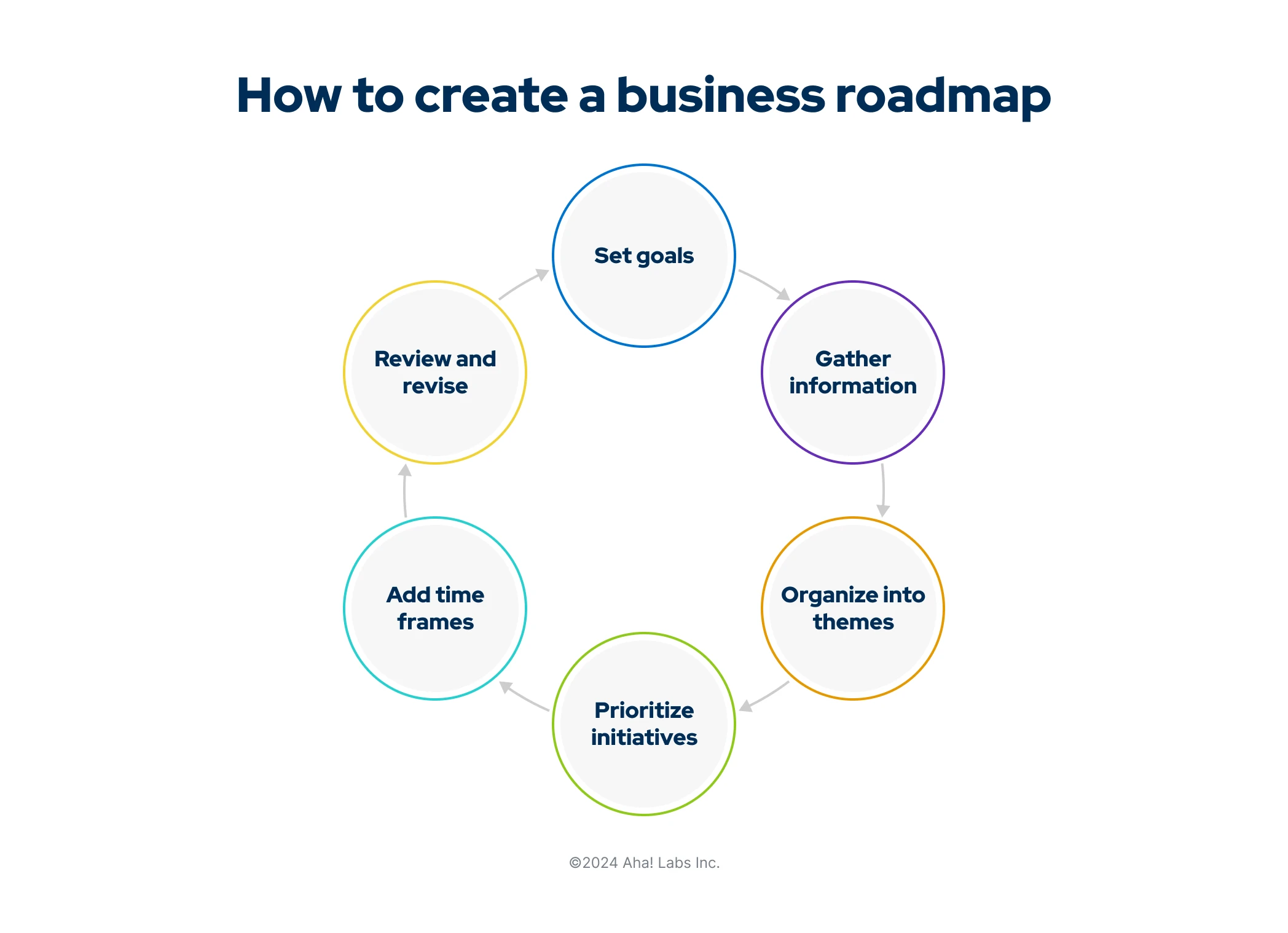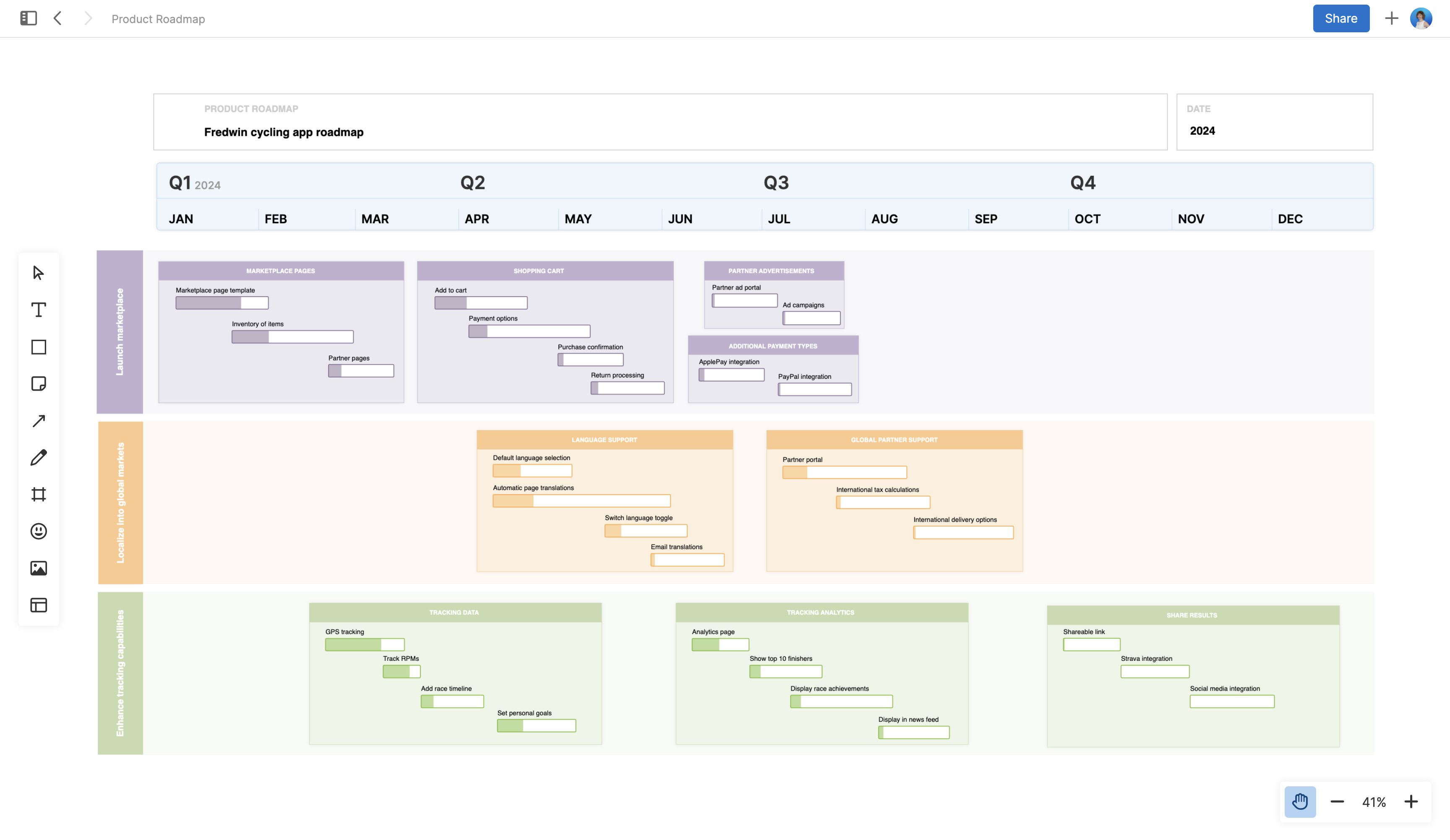What is a business roadmap?
Align everyone on your team for what is ahead with a thoughtfully crafted business roadmap
Last updated: February 2025
A business roadmap is a visual plan that turns strategy into action, aligning teams around long-term goals. This guide explains what to include on a business roadmap, how to build one (whether you are a startup, established company, or something in between), and provides templates and tips to keep your roadmap clear, actionable, and adaptable over time. |
Roadmaps make strategy work. This is especially true at the business level. A business (or company) roadmap is a visual plan showing your long-term strategic goals and the steps you will take to achieve them. It is key for aligning the team, tracking progress, and unifying everyone with a clear sense of direction and pride in the journey ahead.
Company and product leaders use business roadmaps to communicate the organization's vision and plans at every growth stage — from lean startups to established enterprises. Everyone benefits when they understand how their daily work ties to meaningful impact. A business roadmap bridges that gap, making the big picture feel tangible.
This custom roadmap created in Aha! Roadmaps shows business goals and initiatives, success metrics, and progress.
Business roadmaps also help organizations of all sizes scale and innovate. No matter the industry or market, leaders use roadmaps to clarify where the company is headed and identify the high-level objectives needed to get there.
This guide will walk you through the essentials of creating a business roadmap, including best practices and tailored tips for startups and established enterprises alike.
Use the following links to jump ahead to a specific section:
Why are there so many ways to say business roadmap?
The phrasing surrounding business roadmaps can certainly feel like a maze of terms (business roadmaps, business plans, and product roadmaps, not to mention vision, mission, and everything in between). But here is the kicker: They are not just different ways to say the same thing. Each has a distinct role in guiding your strategy and keeping your team aligned. Let’s clear up the confusion and break down what makes a business roadmap unique.
First, a quick primer on the differences between the vision, strategy, and roadmap.
Vision: Establishes where you want to go and why it matters
Strategy: Captures the goals, initiatives, and approach for achieving the vision
Roadmap: Visualizes how you will achieve the strategy along with a time frame for completion
Business roadmaps (sometimes called strategy roadmaps) contain broad goals that focus on your company’s overall success — think revenue growth, market expansion, or talent development. Every functional group within your organization aligns its strategy to support these overarching goals.
Product roadmaps contain measurable goals specific to a product and its users, like increasing the adoption of a certain feature or boosting engagement with a new release. It is the product manager's job to ensure these product goals align with the high-level company goals laid out in the business roadmap.
What about a business plan?
Let’s clarify a common misconception: Although the terms "business plan" and "business roadmap" are sometimes used interchangeably, they have distinct purposes.
A business plan is a comprehensive document created at a company’s outset or during major shifts. It outlines the overall strategy, goals, and operational plans. In contrast, a business roadmap visualizes specific elements of the business plan over time, highlighting current and future work to track progress. The table below summarizes the key differences between a business plan and a business roadmap.
Business plan | Business roadmap | |
Format | A detailed document describing business operations; often lengthy | A visual timeline showing strategic goals and initiatives |
Components | Includes an executive summary, products/services market analysis, financials, and budget | Maps out a company's goals, initiatives, milestones, and dependencies |
Audience | Used by executives and senior leaders; shared with banks, investors, partners, and suppliers | Often an internal tool for senior leaders; shared with teams, investors, and partners |
Benefits | Provides a foundational guide for running and scaling the business; supports decision-making | Helps track progress toward strategic goals; aligns team on priorities |
Startup tip: Nail your vision and strategy first. Secure these approvals early on, then focus on developing your business plan and roadmap.
Pro move for established companies: Stay flexible. Regularly revisit your strategy to tackle market changes and evolving customer needs.
Related:
What to include on a business roadmap
Business roadmaps are broad, capturing the most important strategic plans across the company. Regardless of your industry or organization size, you will likely want to include the following:
Goals: Measurable, time-bound objectives that support your company vision
Initiatives: High-level efforts or themes of work that you will pursue to achieve each goal
Epics: The main areas of investment needed to accomplish the initiatives
It is important to include a timeline for completion, which will vary depending on the goals. For example, a long-term roadmap might span three to five (or even 10) years and include high-level forecasts for revenue, marketing and sales, staffing, operations, and new product or service development.
Alternatively, a shorter-term roadmap can focus on a year or six months at a time. This type of roadmap might detail corporate-level goals and initiatives along with more granular plans from specific teams, illustrating how everyone will contribute to overall business objectives. You might even maintain both long- and short-term roadmaps simultaneously to capture different planning horizons.
To make the most of this adaptive planning approach, it helps to use a shared strategic planning tool like Aha! Roadmaps. With real-time data updates, every roadmap reflects current progress. This aligns your organization around what you aim to achieve and how you will collaborate to get there.
Startup tip: Focus on immediate impact. Prioritize features that drive user adoption and revenue. Be flexible and let your roadmap evolve as you learn more about your market and customers.
Pro move for established companies: Do not overlook your flagship products. Balance innovation (new products, market expansions) with ongoing improvements to keep loyal customers happy.
Related:
How to build a business roadmap
Ready to build your business roadmap? The process can vary based on your company’s size, industry, and strategic focus, but the key steps remain the same. Here is a general approach to get you started:
Set goals: Establish what you want to achieve, from revenue to hiring.
Gather information: Seek input from organizational leaders and research your market.
Organize into themes: Identify patterns in your inputs.
Prioritize initiatives: Use those themes to define initiatives, making sure each one supports a specific goal.
Add time frames: Forecast resourcing and evaluate when each initiative should be completed.
Review and revise: Evaluate your progress against the roadmap often so you can spot challenges and adjust as needed.





